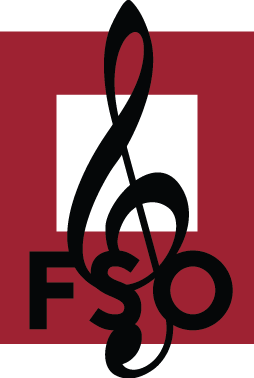
It’s no secret that the Frederick Symphony Orchestra has a lot to say about music education. We’ve discussed its benefits from childhood to teenage years and shown growing concern over the government’s potential cuts to arts programs across the nation.
Now, it’s time to congratulate the great strides that a few special Maryland arts programs have made toward improving their music curriculum.
“Founded in 2006, The NAMM Foundation represents the generosity and philanthropy of the music products industry.”
NAMM actively partners with more than 10 organizations, including Americans For The Arts, John Lennon Educational Tour Bus, and National School Boards Association. However, it’s their partnership with the University of Kansas that put Maryland schools on the map.
The duo put together an annual list of the Best Communities For Music Education (BCME) based on “outstanding efforts by teachers, administrators, parents, students, and community leaders who have made music education part of the curriculum. Designations are made to districts and schools that demonstrate an exceptionally high commitment and access to music education.”
This year, more than 520 school districts across the United States were recognized, including the following four in Maryland:
- Baltimore County Public Schools in Towson
- Carroll County Public Schools in Westminster
- Howard County Public School System in Ellicott City
- Wicomico County Public Schools in Salisbury
Also, among more than 90 individual public, private, parochial or charter schools across the country, Largo High School in Upper Marlboro was the only Maryland school to be recognized as a 2017 SupportMusic Merit Award School (SMMA), according to the program’s website.
This national and local recognition is meant to serve as an opportunity to validate or audit your school’s or district’s support for music.
To qualify for next year, a district representative or administrator must fill out NAMM’s individual surveys for BCME and SMMA. Each survey is then verified by district officials and reviewed by advisory organizations. Survey questions are broken up into nine categories and can include:
Participation In Music and Scheduling
- Number of K through 12 students and how many qualify for Title I support
- How many students are enrolled in any music class
- How many minutes of music instruction are required
- Length of and skills taught in music classes
Qualified Faculty
- Certifications, degrees, and licenses of music educators
- Type of music-specific development opportunities offered, including conferences and workshops
- Music educators’ collaboration with instructors of other studies
Opportunity and Support From Administrators
- Type of programs offered, including choral ensemble, keyboard lab, and recording exploration
- Opportunity and amount of time for private or small group lessons
- How many students study music outside of school hours
- Integration with special needs students
- How many and which stakeholders attended a concert within the last year
- Exploration of other cultures through music
- A fine art requirement for graduation and how many students fulfill it
Standards Based Learning Curriculum and Community Partnerships
- Performances by third-party musical acts in and out of school
- Awards and recognitions for musically inclined students
- Out-of-school performance opportunities
Technology and Funding
- Type of and amount spent using technology for music curriculum
- Music program budget and fundraising efforts
For more information about how your school can raise its music education efforts and recognition through NAMM’s annual awards, click here.
You can also help raise awareness for local music by attending Frederick County Public Libraries’ Symphony Storytime, Little Music Makers, and other free concerts or by donating to the Frederick Symphony Orchestra:
